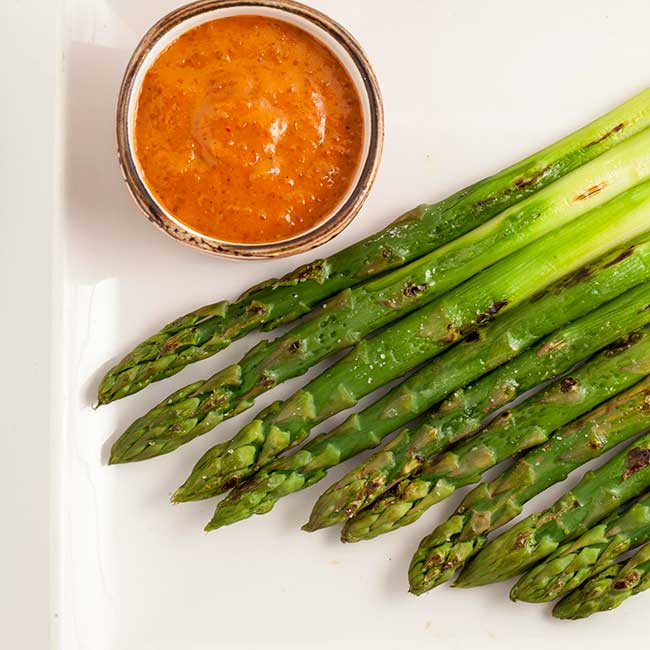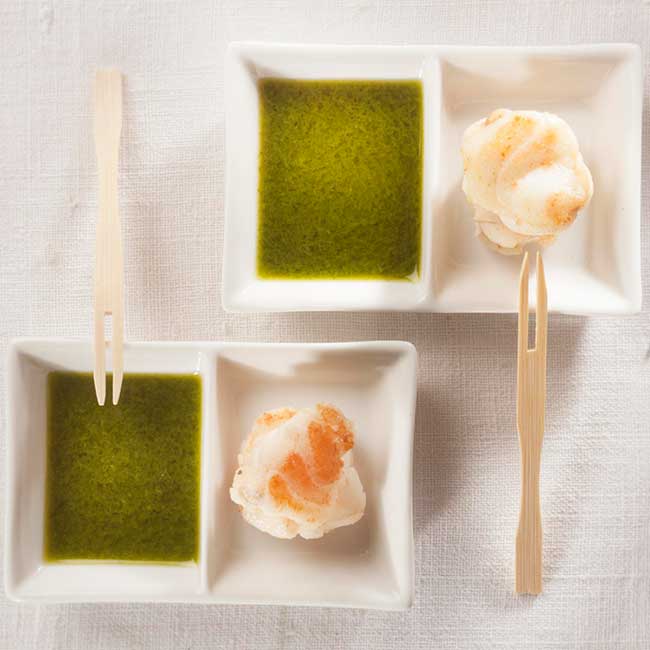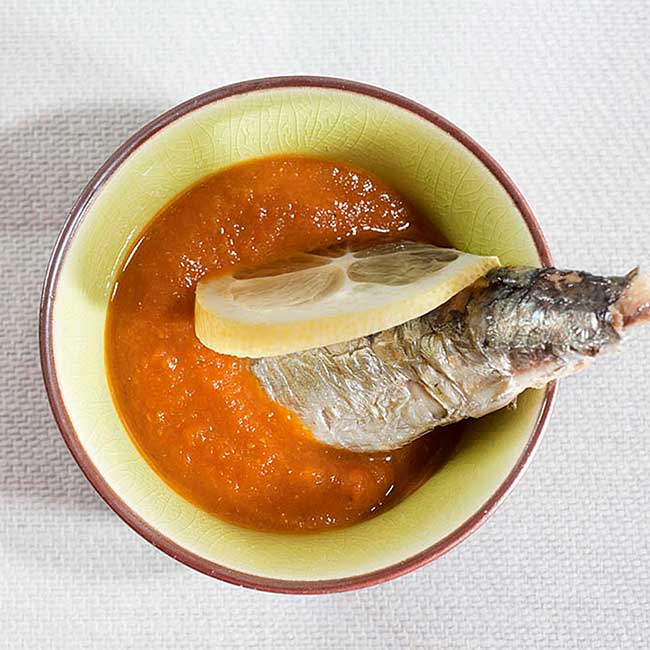.png.transform/rendition-xs/image_image%20(1).png)
Bottling the Essence of the Spanish Traditional Sauces
Traditional salsas from the Spanish coast and the countryside, from farmhouses and fishing villages, are now making their way around the world as high-quality ready-to-eat products

Almost every region of Spain has its own signature sauce, a rustic recipe developed over generations from the staple ingredients of provincial agriculture. Pisto, for example – that ratatouille-like dish of tomatoes, onions, peppers, aubergine and olive oil. Emerging in various different styles from the farmlands of Castile-La Mancha, Navarra, Murcia, and Extremadura, it is usually served warm, and topped with egg or slowly melting slices of Manchego cheese.
Romesco, meanwhile, has its origins around the port of Tarragona (Catalonia), a kind of fisherman’s concoction with roasted tomatoes, garlic, and toasted almonds, designed to compliment the local seafood. Xató, a somewhat similar blend of tomatoes with nuts, breadcrumbs, olive oil, and vinegar, has become a defining dish of Catalonia. A high-profile “xató route” links towns and villages known for their own variations, from Sitges and Canyelles to Vilanova i la Geltr (Catalonia).
In recent decades, various domestic companies have bottled these sauces as ready-to-use products. Just as Spain’s conservas food culture has established a long tradition of canning seafood and vegetables without losing their essential flavour, these manufacturers have tended to focus on preserving both the authenticity and the quality of the home-cooked original.
Leading Catalan brand C Ferrer is strongly identified with premade xató, and serves as regular sponsor for promotional events along the xató route, while also producing its own romesco, tomato sofrito, and All i Oli – that distinctive, mayo-like Mediterranean emulsion mixing garlic and olive oil. The company began in 1964 with “grandpa” Jose Ferrer, a distributor of canned truffles and mushrooms from the foothills of the Pyrennes.

Now run by the second generation of Ferrers, its range of quality prepared foods extends to more than 200 products, with exports now representing up to 15% of its annual turnover. This is broadly in line with the average year-on-year growth rate of 9% in export sales of Spanish tomato-based sauces since 2011, which accounted for revenues of over €68 million in 2018/19.
Certain specialised tomato-free sauces have also made steady progress in foreign markets, most notably that beloved condiment of the Canary Islands, known as mojo canario. Historically, it is made in rojo and verde varieties, with La Palma red peppers and pimentón or green peppers and parsely or coriander, though each island – and some would say each family – uses a slightly different combination of ingredients, seasonings, and spice levels.
“Indeed, there are as many mojos as houses in the Canaries,” says Ofelia Alexander, export manager of Guachinerfe SL, a Tenerife based company that dominates the ready-to-eat market for this particular delicacy. “It’s very difficult to develop a sauce that appeals to everyone,” admits Alexander, but the Guachinerfe house style follows the recipe preferred by the Chinue Aguiar family, who founded the brand in 1996. They take great care in selecting “top quality, locally sourced ingredients, and particularly the spices and garlic, which are a very important part of the identity of mojo canario.”

Guachinerfe has been growing its business across the islands and peninsular Spain, with a huge sales spike of 50% in 2015, followed by several successive years of domestic and overseas growth. The biggest foreign gains, says Alexander, have been made in nations from which large numbers of tourists come to visit the Canaries on holiday: the UK, Germany, and increasingly, Sweden. “[These visitors] are testing our food in situ, which helps to create a demand in their home countries.”
The American market, meanwhile, can be difficult to crack, but Asturias-born chef José Andrés has done it. A celebrity in the US because of his restaurants, charity work, TV shows and cookbooks, he had already created a certain brand-awareness when he started his own line of Spanish sauces. Sold through the ThinkFoodGroup for the last six years, they’ve seen “consistent growth¨, says brand director Marisol Plata, especially on the east and west coasts.
“Consumers recognise the quality associated with the José Andrés Foods product line.” Those products include classic pisto and frito sauces, both sourced directly from the pastoral lowlands of Navarra, with its “ideal climate and longstanding tradition of agriculture.” The vegetables are in fact harvested, roasted and stewed by José Andrés’s partners at Conservas Artesanales Rosara, another family business that has sold its own products in Spain for years.
The ThinkFoodGroup's culinary team tested Rosara’s recipes, and found them ideal for the brand. And while the sauces speak for themselves, taste-wise, ThinkFoodGroup has been able to actively promote them through savvy marketing, “sharing recipes that use our ingredients on different blogs and social media channels.” “The audience is very diverse, and growing,” says Plata.
“We have an opportunity to really elevate Spanish cooking at home.”
Text: Stephen Phelan

